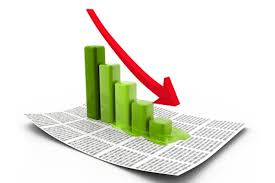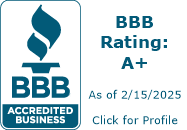
We are well into 2019 and recession risks seems to have faded into the rear view mirror. Is this a facade? Are we out of the woods yet? What changed? The biggest wildcard going into 2019 was the pace and number of increases from the federal reserve. What has happened now that we are well into 2019? What does this mean for real estate in 2019?
Pace and number of rate increases changed
The pace and number of rate increases totally changed at the beginning of 2019 with the federal reserve making an abrupt change by not just slowing the rate increases, but totally stopping rate increases. As I mentioned earlier in the year, the main economic drivers in 2019 will be the pace of rate increases from the federal reserve, market volatility, the ongoing trade war, and market sentiment. Each of these factors could have large impacts on residential and commercial real estate in 2019. For real estate in the upcoming year, the pace of rate increases by the federal reserve will have the largest impact.
The federal reserve at the beginning of the year abruptly changed course announcing rates were now at neutral therefore almost eliminating any chance for rate increases for the remainder of the year. Prior to this announcement 86% of economists believed that the federal reserve would hike two or three times. When the federal reserve announced that rates were at neutral this was quite the surprise for the markets and treasury rates quickly declined.
What is the impact of the federal reserve change in tone?
The change in Fed policy has delayed a recession by about a year. Lower interest rates have put a “floor” under the economy to help prop it up against the recessionary winds. Borrowing costs for both businesses and households has declined allowing credit to continue to flow freely. This has allowed businesses and households to continue to use “cheap money” to keep the economy moving.
Many risks still remain for the economy
- Asset Bubble: Low rates have prevented the US from sliding into a recession as credit remains cheap. The flip side is that the cheap money enables asset bubbles for two reasons. 1) Leverage is inexpensive and therefore much more enticing for investors. For example, if you can borrower at 3% and invest those funds and get a 5% return, why wouldn’t you? 2) With rates so low in “safe assets” like bonds and treasuries investors are “hunting” for returns whether that is in real estate, corporate debt, consumer debt, etc… with so much demand for these riskier assets prices are getting pushed up. Nobody is quite sure where the next asset bubble will occur, but cheap money for extended periods of time will surely create one.
- Trade War: The trade war with China and other countries looks to continue in 2019. Trade conflicts should start to flow through the entire supply chain in 2019 if there is not resolution. I don’t think that the deeper issues that caused the trade issues will be resolved in 2019. This should lead to a “repricing” of many companies/industries due to higher cost structures and ultimately prices for consumers. There is considerable uncertainty whether consumers can absorb the full impact of the price increases. If consumers pull back due to prices there could be a shock to the economy.
- Market Volatility: Volatility is a symptom of lofty expectations, faster rate increases, and the trade war. Volatility recently has been low. I suspect this is the calm before the storm. I would expect volatility to start picking up as earnings slow along with the economy. One byproduct of volatility is consumer and business confidence. I would suspect both would take a hit in 2020 as volatility picks up.
- Market Sentiment: As 2019 starts with a bang, there is still considerable “recession talk”. Every major economist is predicting a recession in the next 18 months. This change in tone makes market participants weary to make large moves as the threat of a recession looms
What does this mean for real estate?
- Rates: Interest rates on a 30 year mortgage have declined to about 4% increasing affordability for many buyers that had previously been priced out of the market. Prior to the change from the federal reserve predictions for rates were closer to 6%. The lower interest rates have spurred demand.
- Prices: For new construction properties, build costs continue to increase substantially due to increased material costs (for example lumber is up 40% due to trade war with Canada) and increased labor costs due to the shortage of available skilled workers. These factors have caused the building industry to pull back a little as demand for higher priced properties wanes.
- Supply: In many “hot markets” supply has increased considerably keeping a floor on any price increases
- Consumer confidence: This is the most important factor to watch. Currently confidence is holding up for now but is beginning to show signs of cracking. There has been a noticeable pull back in home purchase activity already in many markets. Consumers and businesses are starting to wonder if we are at the “top of the market” and therefore are becoming hesitant to make a large purchase
We all know real estate is market specific, but overall real estate throughout the country will soften considerably in 2019. Although rates have fallen spurring demand, the wild card of how “soft” the market will become is driven by consumer confidence which could be thrown off course by increased market volatility and talk of “top of the market”. To what extent consumers and businesses react to increased volatility and trying to avoid the market peak is the million-dollar question. 2019 will be the year consumers and businesses begin to pull back. How much will dictate how “soft” real estate becomes in 2019.
The Federal Reserve made the right move by holding on further rate increases. Although they likely avoided a recession in the short term, clouds are still building on the horizon as the threat of asset bubbles and talk of “market peaks” begin to surface. Don’t forget the important words of Mark Twain: “history doesn’t repeat itself but rhymes”. It looks like the next rhyme will now begin sometime in 2020
Resources/additional reading:
- https://www.cnbc.com/2018/11/20/jeremy-siegel-the-fed-could-substantially-ease-rate-hikes-in-2019.html
- https://www.forbes.com/sites/forbesrealestatecouncil/2018/09/12/worried-about-the-impact-of-trade-wars-keep-an-eye-on-the-three-rs/#13afd25d343e
I need your help!
Don’t worry, I’m not asking you to wire money to your long-lost cousin that is going to give you a million dollars if you just send them your bank account! I do need your help though, please like and share our articles it would be greatly appreciated.
Written by Glen Weinberg, COO/ VP Fairview Commercial Lending. Glen has been published as an expert in hard money lending, real estate valuation, financing, and various other real estate topics in the Colorado Real Estate Journal, the CO Biz Magazine, The Denver Post, The Scotsman mortgage broker guide, Mortgage Professional America and various other national publications.
Fairview is a hard money lender specializing in private money loans / non-bank real estate loans in Georgia, Colorado, Illinois, and Florida. They are recognized in the industry as the leader in hard money lending with no upfront fees or any other games. Learn more about Hard Money Lending through our free Hard Money Guide. To get started on a loan all they need is their simple one page application (no upfront fees or other games).
